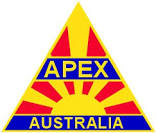Introduction to Upper Air Charts
One of the first things to always keep in mind is weather is like the humidity, its all relative. In some aspects, absolute values of pressure and temperature are not as important as the change in pressure or the change in temperature. In meteorology, we refer to the “change in” as a gradient.

Any time there is a rapid “change in” any particular weather element we will say the “gradient” is large. It is near these large gradients where the weather is most active.A common example is found near cold fronts. The “change in” air pressure is typically rapid near a cold front and therefore the pressure “gradient” is large. The greater the pressure gradient is near a front the stronger the wind. This is just as true for the upper atmosphere.
While the information a skew-t chart provides is invaluable, it will only tell us what is happening in the atmosphere at that location. To paint a complete picture of the atmosphere as a whole we need to view radiosonde data from many upper air observations.
We do this by creating constant pressure charts that let us see changes, and gradients, in atmospheric conditions across the country and around the world.

